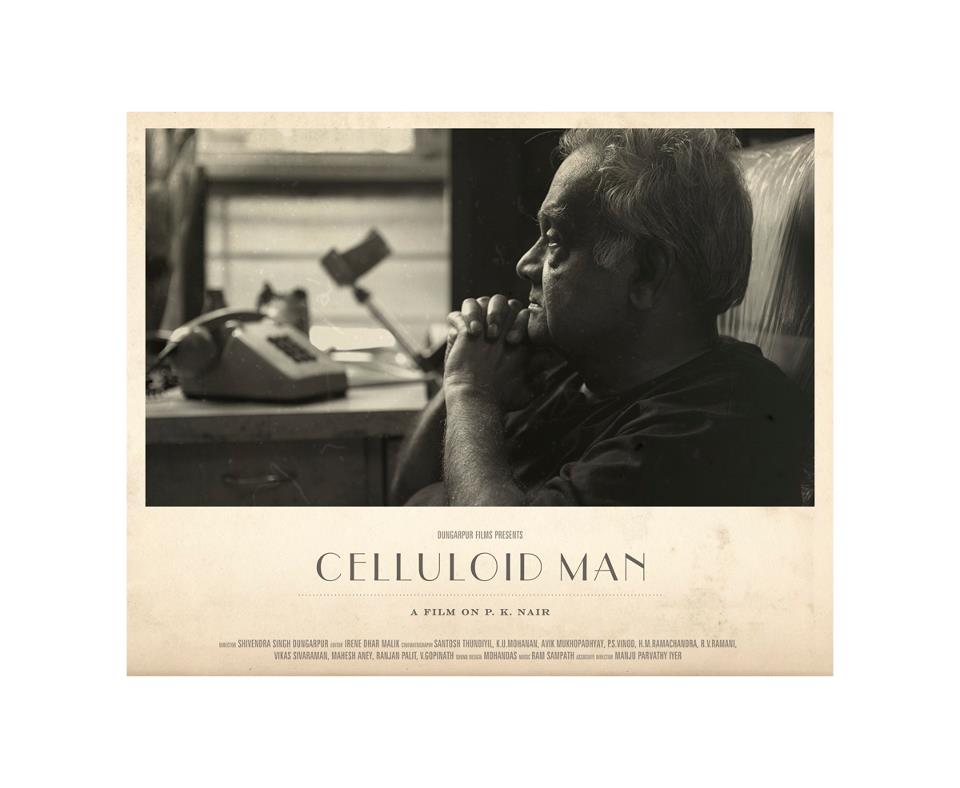In feature films the director is God; in documentary films God is the director - Alfred Hitchcock.
With
due respect to Alfred Hitchcock's ideas, I dare say that here is a
documentary which is far more relevant and heavier in content than most
of the feature films where god is not the director. In fact, Shivendra
Singh Dungarpur's National Award winning documentary 'Celluloid Man' is a
film appreciation course in itself.
The film attains more
importance because 2013 is the 100th year of Indian cinema and
'Celluloid Man' is a documentation of the evolvement of a phenomenon
called films in a country which draws its cultural references from
celluloid.
The documentary revolves around the work of Paramesh Krishnan Nair, the man responsible for building the National Film Archive of India, and covers a span of almost 70 years.
'Celluloid
Man' showcases the tradition of film archiving and showcasing in India
and how films amalgamated in the daily lives of common Indians.
'Celluloid
Man' can broadly be considered as a biography but it is multi-layered
and deals with different forms of preserved history and the cultural
artifacts which form the popular conscience towards an art form.
Unlike
most of the audacious subjects of biographical documentaries, the
subject is a man who is known for breaking the ceiling between the ideal
and social environments. PK Nair recalls about his childhood and how he
started to collect film related items at a tender age without falling
into an unapologetic self-praise mode.
He understands the
personalised nature of his work but seldom does he reveal the
difficulties of his job as an individual. Nair never becomes translucent
about the nature of a true archivist despite eminent film personalities
showering tons of praise over him. He remains like a saint whose
enthusiasm towards the art of archiving films knows no boundary, in
fact, so much so that he accepts to call himself a film archivist
despite wanting to be a filmmaker initially.
The film tries to
bring PK Nair on par with Henri Langlois, the legendary founder of
Cinematheque, but very soon establishes new standard bars for rest of
the archivists across the globe. Shivendra Singh's painstaking research
gets reflected in the number of commentators he has interviewed for the
film. Shyam Benegal, Jaya Bachchan, Naseeruddin Shah, Krysztof Zanussi,
Gulzar, Saeed Mirza, Mahesh Bhatt, Kumar Sahani, Mrinal Sen, you just
name it. Sometimes these notions look pre-conceived because how does
everyone have a different story to tell, but the moment you take a look
at Nair's contribution in arranging nearly 12,000 prints for NFAI, you
know that you're not witnessing a man's journey but viewing history
taking shape.
Further, 'Celluloid Man' is not merely a biography
as its undertone brings forth a lot of burning questions. If nut farmers
of a remote area can relate to Kurosawa's 'Rashomon' just because
somebody shouldered the responsibility of showcasing them the film, how
can the government be so oblivion towards the fast dying art of
preserving prints. The creative epitomes of masters reached to provide
the villagers a vision for the future only because people like Nair
sacrificed their leisure to create a bank of film prints.
Had he not been there, people would have challenged whether 'Raja Harishchandar' was India's first story film or not!
The
photogenic memory of Nair Saab, the documentary will force you to take
his name with respect, aptly supported by commentaries and imaginative
visuals make you think about the red tapism looming over NFAI, about the
lost documents, about a selfless man, and about a teacher who created
pupils who later evolved as the innovators of Indian cinema.
Not
only the content but form also leads 'Celluloid Man' to become a must
watch. Apart from goosebump moments during rare footage of historical
films, 'Celluloid Man' is directed with aplomb. The director has used
metaphors that will wrench your heart, for example when he juxtaposes
the shots of the rotting cans over the dialogue of a girl who doesn't
want to die, you will feel a revulsion within yourself about the
system.
The introductory black and white shots are superb and
establish just the perfect mood. Thanks to its crisp editing, 'Celluloid
Man' holds the audience's attention for 150 minutes, a noteworthy feat
to achieve for a documentary based on just one principal character.
It's
a must watch film even if you don't like documentaries, simply because a
piece of art needs patrons to survive and then thrive.


No comments:
Post a Comment